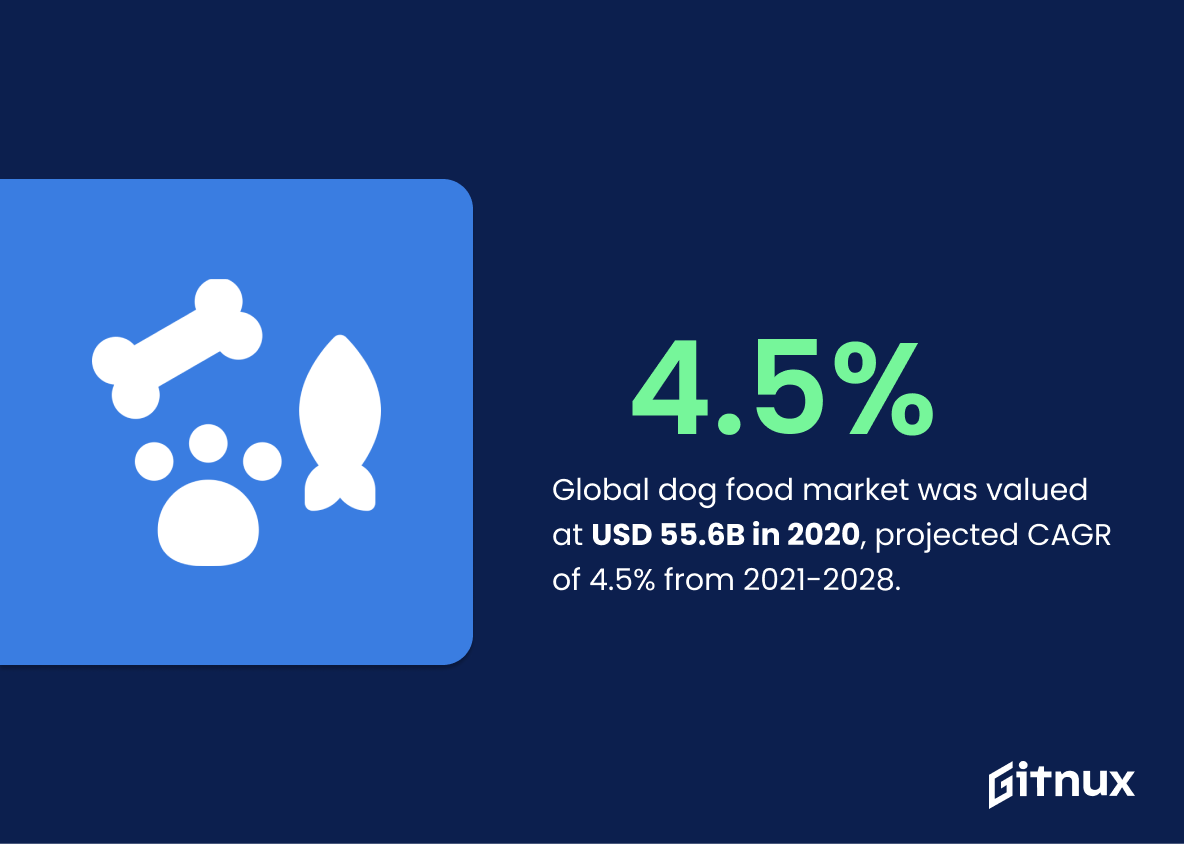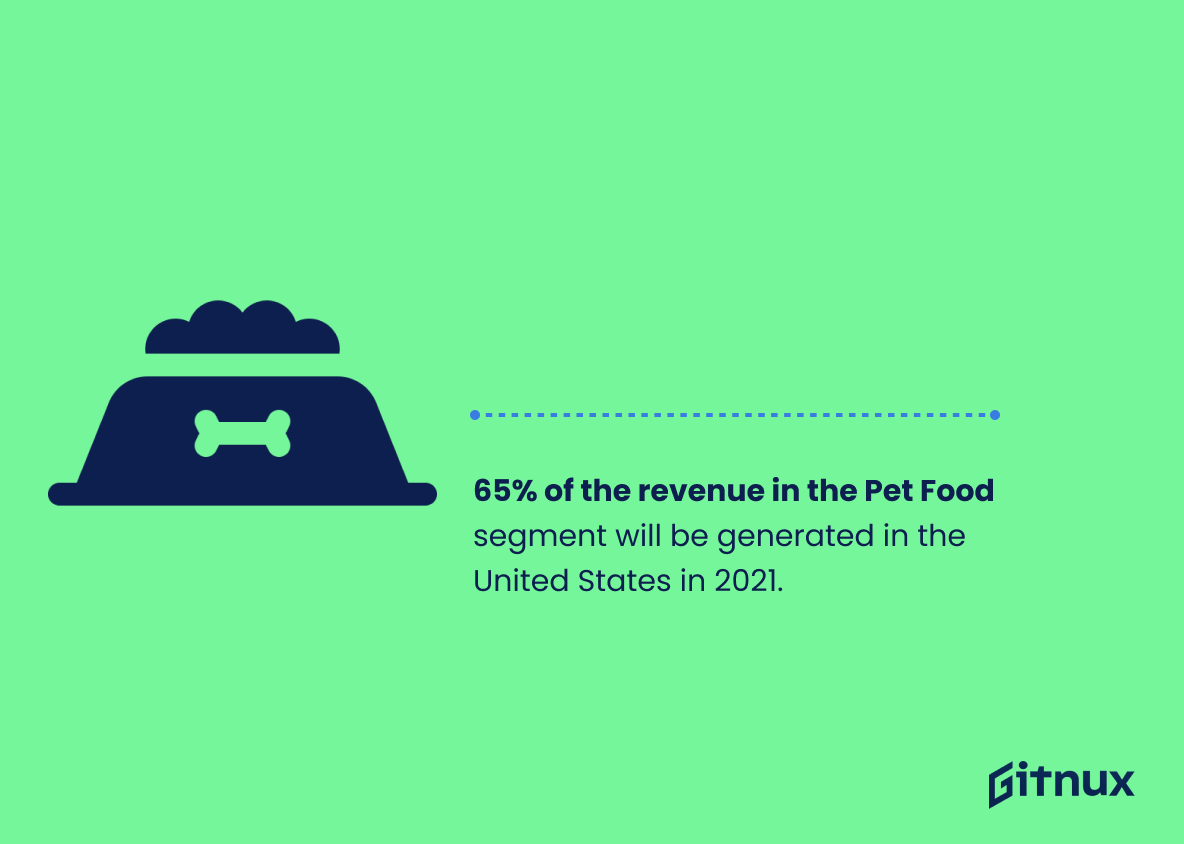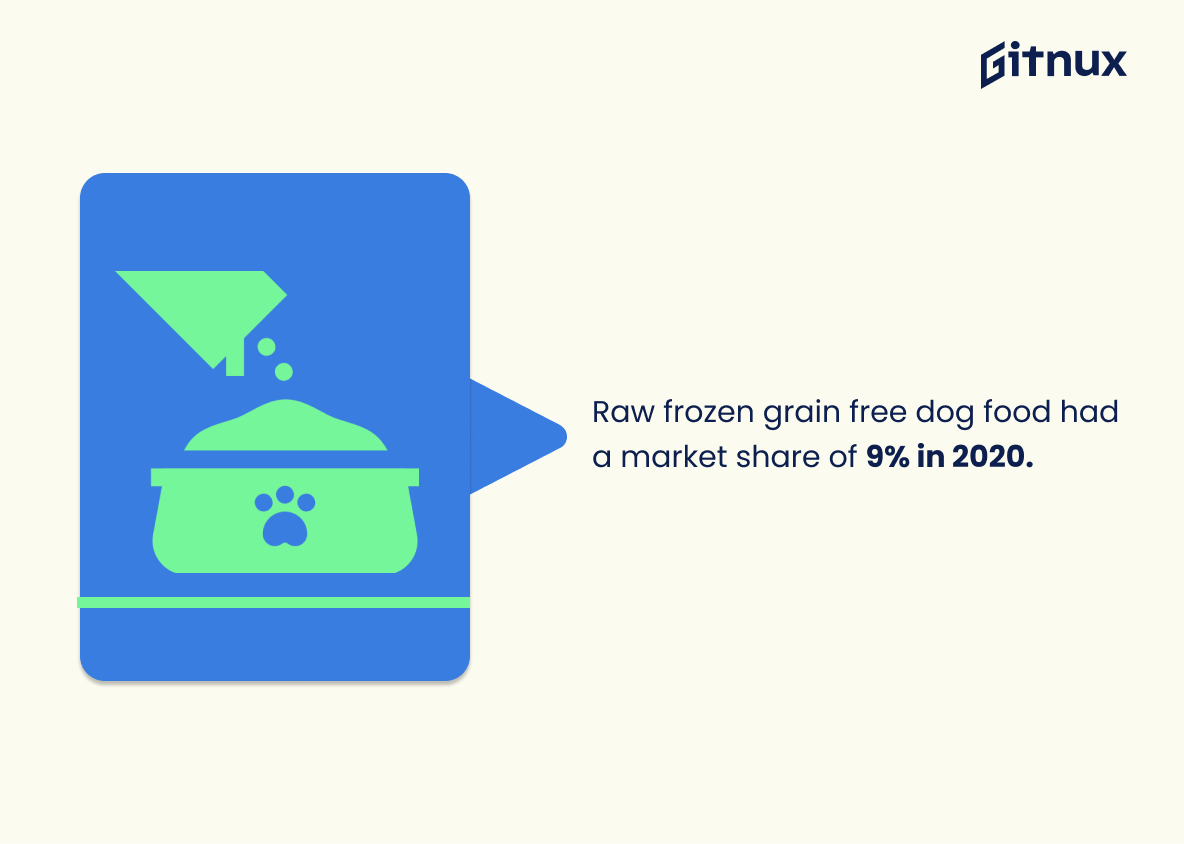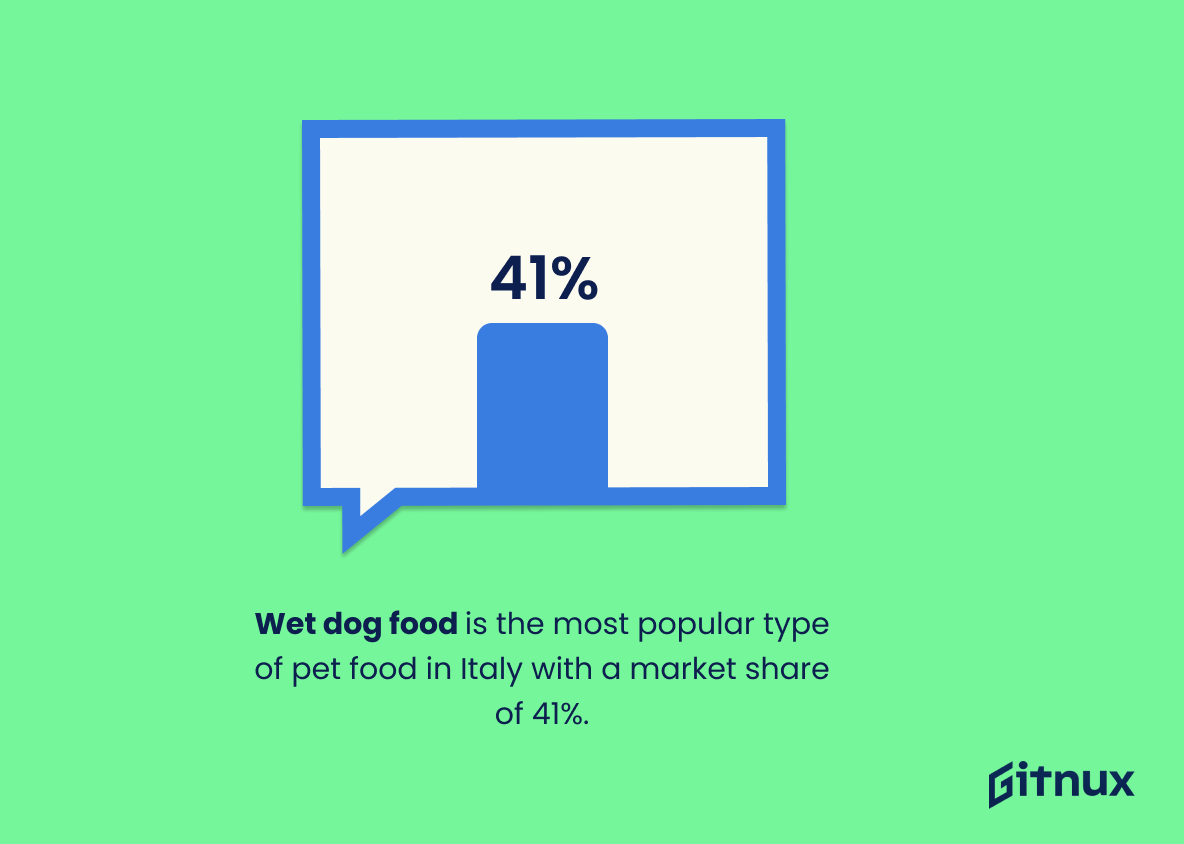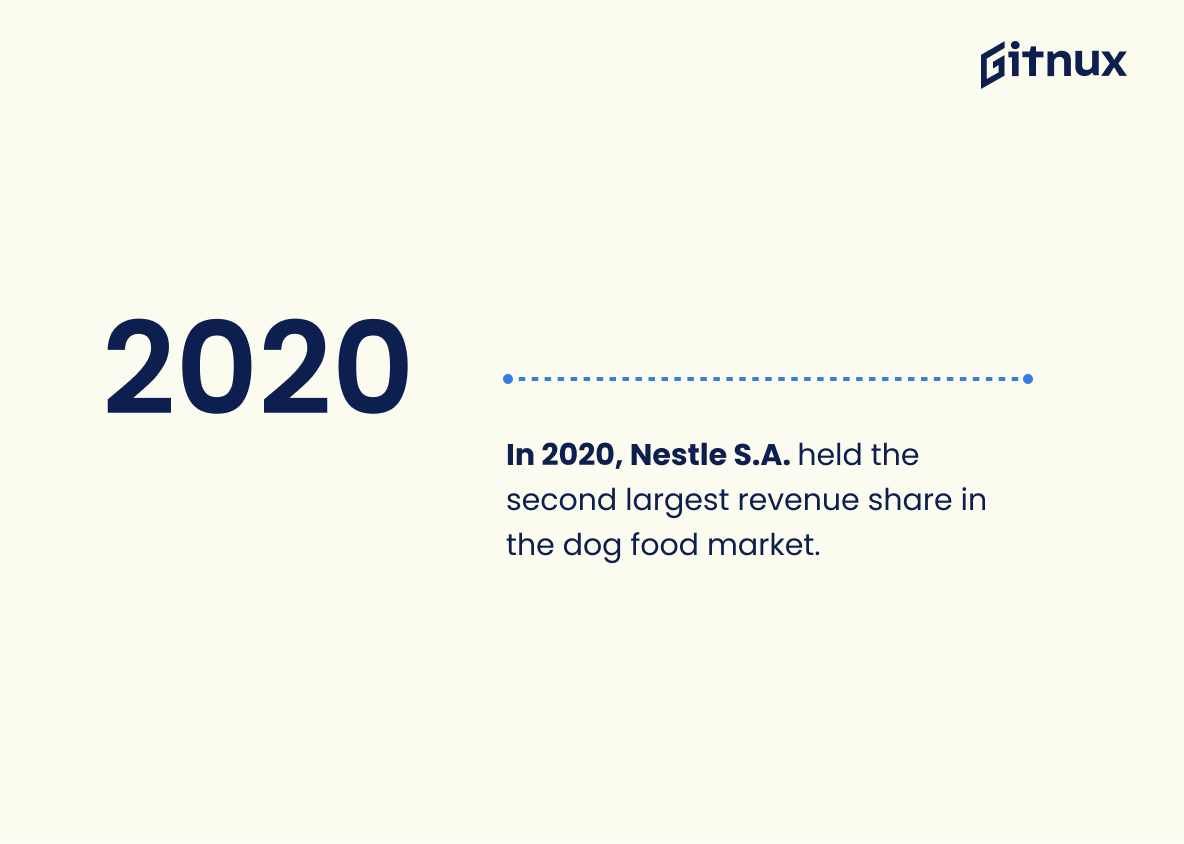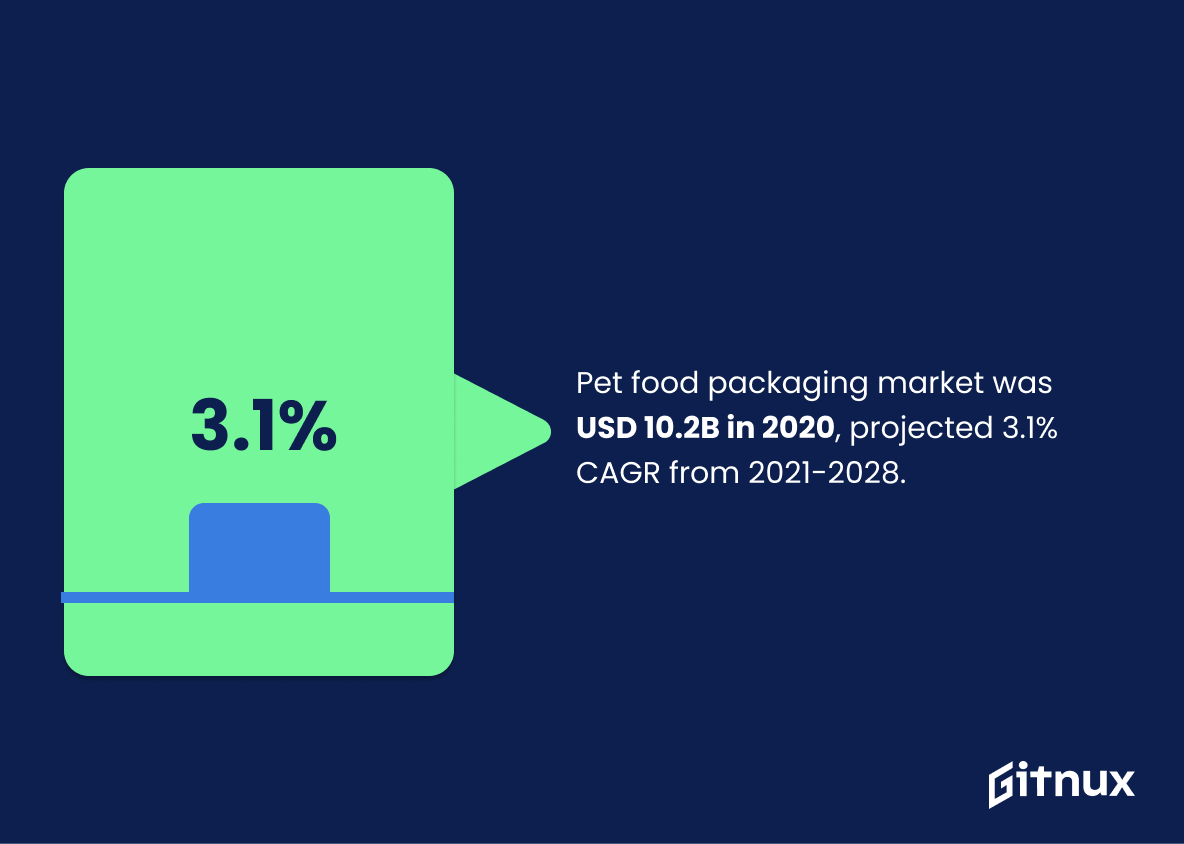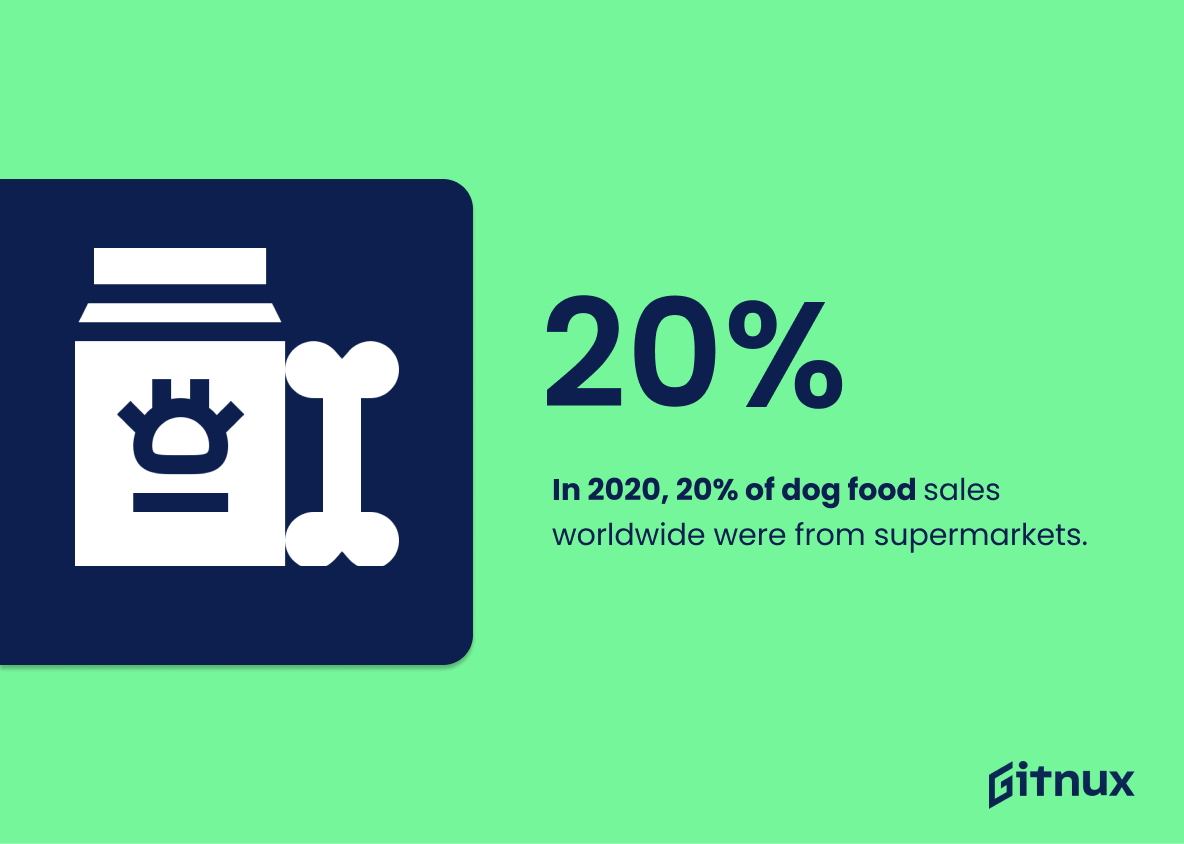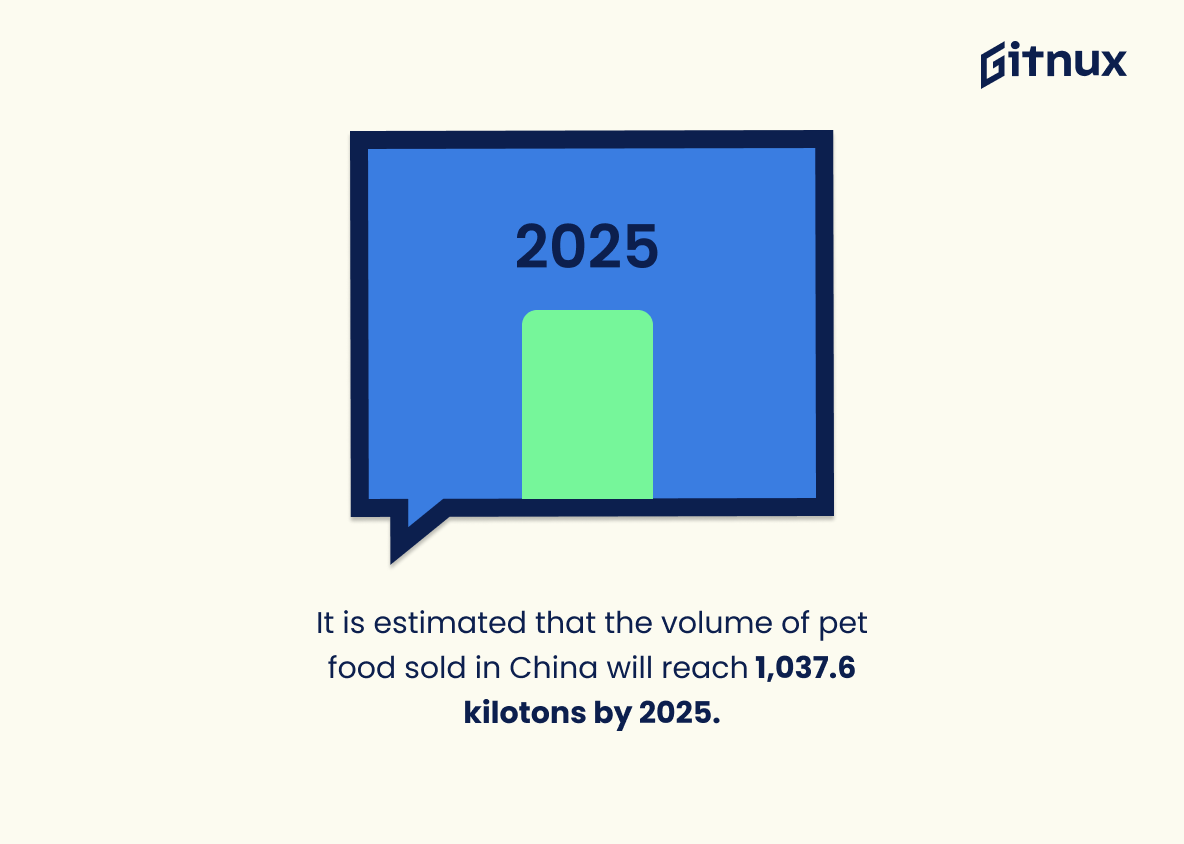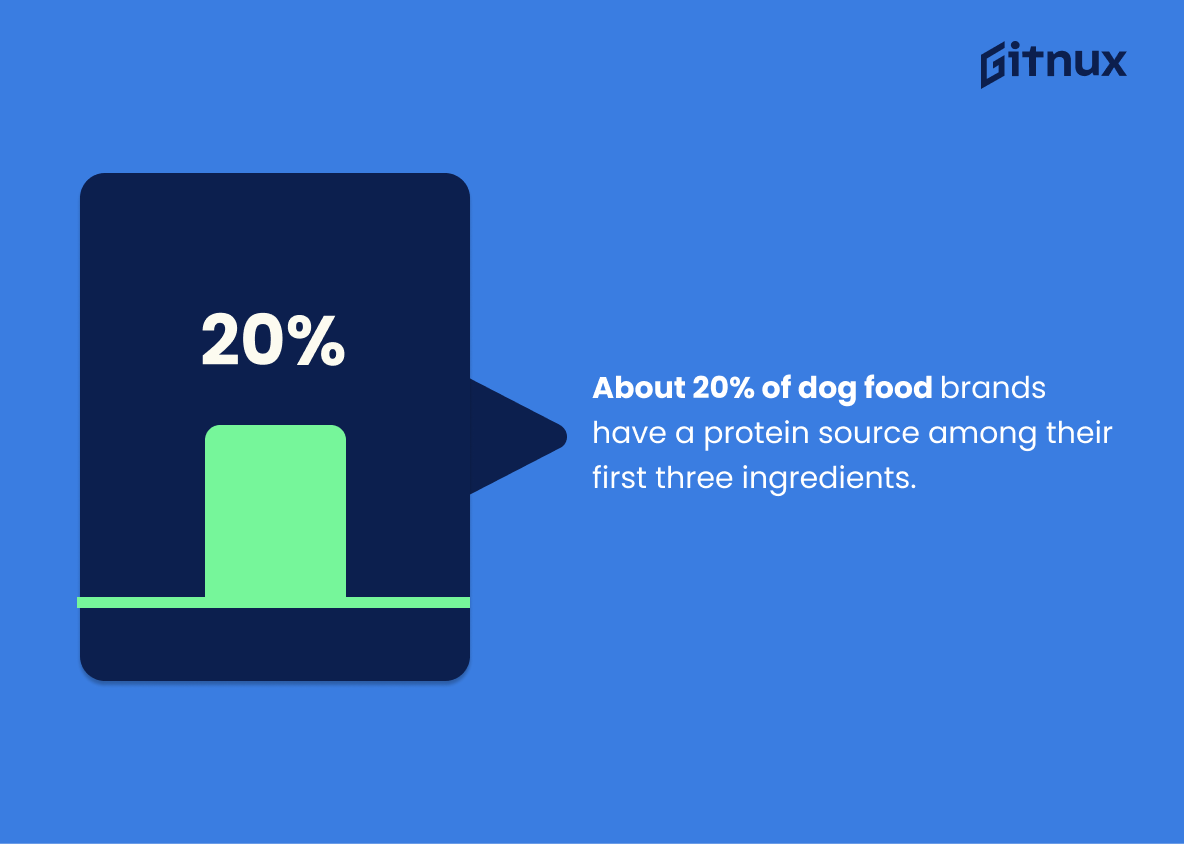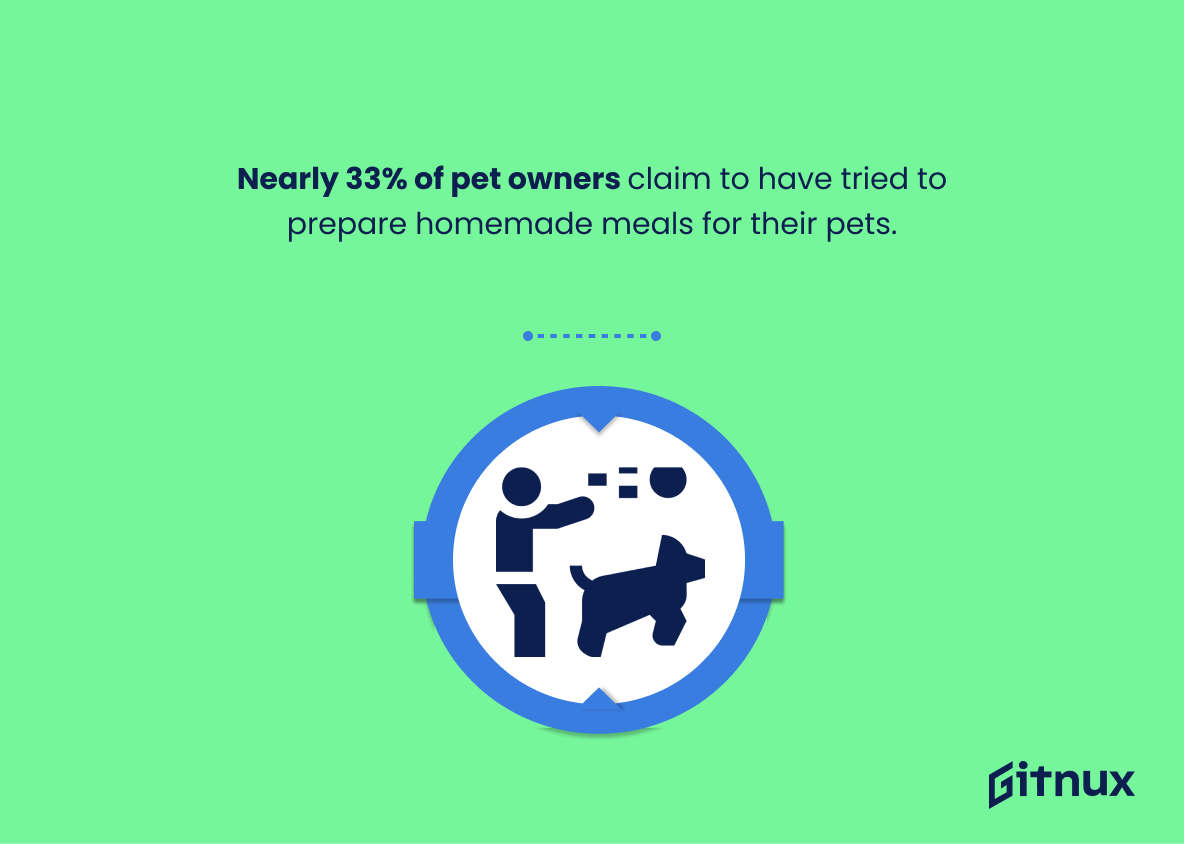As dog ownership continues to soar globally, so too does the attention devoted to our furry friends’ dietary needs. The dog food industry has undergone a colossal transformation, becoming an essential segment in the vast pet care market worldwide. This explosive growth has sparked a heightened interest in dog food industry statistics, reflecting not just sales figures, but also illuminating trends in pet nutrition, emerging market segments and the implications of innovative technology within the industry. This blog post delves into these fascinating statistics, shedding light on the intricate dynamics of the dog food industry, and what they might mean for pet owners, manufacturers, and anyone with a vested interest in the realm of canine care.
The Latest Dog Food Industry Statistics Unveiled
The global dog food market size was valued at USD 55.6 billion in 2020 and is expected to grow at a compound annual growth rate (CAGR) of 4.5% from 2021 to 2028.
An increasing trend of pet humanization, where pets are being treated more like family members, is translating into demand for high-quality and balanced nutrition for dogs, which is driving the expansion of the dog food industry. The fact that the global market size for dog food was already a staggering USD 55.6 billion in 2020 paints a picture of a giant, dynamic, and booming industry.
However, when we delve deeper into the numbers, what truly piques our curiosity is the anticipated growth rate. With a projected compound annual growth rate of 4.5% from 2021 until 2028, it hints that not only is the dog food industry thriving, but it also seems to be growing at a steady and impressive pace.
The potential that this growth reveals is therefore crucial to consider for any individual or corporation involved in the dog food industry. From manufacturers keen to expand, investors hunting for an industry that offers a substantial return on their investment, to entrepreneurs plotting the launch of a novel dog food brand, all would keenly watch this space.
26% of millennials have made a purchase of dog food online.
Delving into the realm of online canine cuisine trends, one cannot ignore the trail blazed by the tech-savvy millennial demographic. With a paw print as big as 26% making their dog food purchase via the digital platform, it’s a clarion call to the dog food industry, signaling a shift in consumer behavior. This substantial percentage underscores the mounting preference and convenience of online shopping, thus shaping future marketing and sales strategies. The proportion also offers insight into the buying habits of a significant consumer group, hinting at the necessity for businesses to bolster their online presence and optimize e-commerce operations. This, indeed, is a pivotal metric that rounds up the digital landscape of the dog food industry.
65% of the revenue in the Pet Food segment will be generated in the United States in 2021.
Diving into the heart of the vibrant pet food industry, we uncover the remarkable fact that the United States is positioned to take the lion’s share of the revenue pie in 2021. A staggering 65% of all earnings in the pet food segment are slated to find their home in the U.S. This statistic is no stray dog in the context of a blog post about Dog Food Industry Statistics, it drives the narrative further with profound impact.
It becomes a spotlight focusing on the immensity of the American market, revealing just how instrumental it is to the global industry. It underpins the importance of evaluating strategies, trends, and consumer behavior specific to the United States in order to grasp the full picture of the dog food market. The statistic also reflects the extraordinary demand and market penetration within the U.S. that vendors from around the world can tap into—a chunky treat to mull over. Whether a blog reader is an industry leader, a new entrant, or a curious pet owner, this figure is a key to understanding the power dynamics and opportunities in the dog food space.
Raw frozen grain free dog food had a market share of 9% in 2020.
The raw frozen grain free dog food carving its niche with a solid 9% market share in the colossal canine edibles industry in 2020 stands as a testament to a shifting consumer preference. These numbers provide us a clear indication that pet parents are reconsidering traditional choices in favor of alternative dog diets. This specific market segment’s growth serves as a beacon for exploring potential novel trends in the industry, thereby informing manufacturers, marketers, veterinarians, and dog owners alike, about the evolving landscape of canine nutrition needs and trends.
North America accounted for 37.1% of the global dog food market in 2020.
The grand reveal of North America’s 37.1% subjugation of the global dog food market in 2020 unarguably establishes its dominance and acts as a market thermometer. This percentage isn’t just a number; it’s an eye-opening testament to North American consumer’s prioritization of their canine companions’ nutrition. Whether you are a budding entrepreneur, an established dog food manufacturer, or simply someone keen on the industry trends, this figure certifies North America’s prominence, shaping your business strategies, manufacturing decisions, and market entry plans. Simultaneously, it underscores the region’s robust demand, consumption patterns, and customer preferences, giving a competitive edge to those willing to cater to this booming market.
The market value of pet food in the United Kingdom is projected to be 2.99 billion pounds by 2025.
Unleashing this data reveals the fertile ground the UK dog food industry is treading on, with a forecasted market value swelling to a hefty 2.99 billion pounds by 2025. This amplifies the bounding growth and the robust appetite for pet food in the market, serving as a veritable feast of opportunities for existing players as well as those considering to dip their paws into this industry. Thus, in a blog post dissecting Dog Food Industry Statistics, this nugget of information becomes an instrumental piece in painting the full picture of the industry’s landscape, not just now, but with an eye towards the future as well.
Wet dog food is the most popular type of pet food in Italy with a market share of 41%.
A statistic like “Wet dog food holds a commanding 41% market share in Italy” plays a pivotal role in painting a comprehensive picture of the dog food industry, especially in a blog post focused on industry statistics. First off, it underscores the dominance of wet dog foods in the Italian market, providing an insightful snapshot of consumer preferences in this locale – an indispensable piece of the puzzle for anyone studying global dog food trends. Additionally, it offers valuable insight for businesses or entrepreneurs intending to penetrate or expand within Italy’s pet food market. Armed with this data, they can align their strategies according to the stated preference towards wet dog food. Lastly, it opens the door to further intriguing investigations, such as what makes wet dog food so appealing in Italy, thus fueling more in-depth industry research.
In 2020, Nestle S.A. held the second largest revenue share in the dog food market.
Observing the dog food industry dynamics, the notable mention of Nestle S.A.’s position as the runner-up in revenue share in 2020 serves as a crucial pivot point. Being a global giant, their lofty stature reinforces the competitive nature of the market. This fact provides substance to a comprehensive analysis of the sector’s economic health, the players in the arena, their strategic moves, and the overall direction of the industry trends. It directs readers to contemplate Nestle S.A.’s brand strategies and product offerings that have led to such significant market share, and how other competitors are faring against this behemoth. It also nudges stakeholders and potential investors to consider the monetary possibilities and marketability within this industry.
The size of the pet food packaging market was USD 10.2 billion in 2020 and is expected to grow at a CAGR of 3.1% from 2021 to 2028.
The presented statistic serves as a remarkable beacon of growth and potential in the dog food industry. Casting light on the sheer magnitude of the pet food packaging market, the statistic highlights that it stood at a whopping USD 10.2 billion in 2020. Notably, it isn’t just the current size of the market that impresses; it’s the forward momentum represented by the predicted compounded annual growth rate (CAGR) of 3.1% from 2021 to 2028 that truly illuminates the industry’s trajectory.
In delving into the dog food segment of this market, this potent growth projection provides an intriguing insight into the expanding demand and consumption of dog food. It suggests not just a proliferation of pet ownership, but a rising dedication to pet health and nutrition, to necessitate such an expansion.
Ultimately, if you’re exploring the dog food industry through the loupe of statistics, this one isn’t merely a descriptive number, it’s a vibrant indication of consistent growth and latent opportunities in the sector. Inferring from this, one could say that for businesses and investors attracted to the dog food industry, their road ahead may be lined not just with potential but with burgeoning market demand and growth.
Only 4% of pet owners report that their pets have food allergies.
With an ocean of drool-worthy flavors and nutritious ingredients, the dog food industry constantly seeks uniquely tailored recipes to attract conscientious pet owners. It’s fascinating to note that only a sliver—4%—of these owners highlight food allergies in their furry friends. This data nugget adds a unique layer of information when dissecting the dietary needs and health woes of our four-legged companions. The pet food industry, ever-attuned to these changes, can thereby calibrate their product development strategies, adjusting the mix and concentration of ingredients in their product range. It also provides them with a niche market opportunity for delivering specialized solutions to tackle this minuscule yet significant issue, embedding further trust in the brand. This statistic is, therefore, not just a number, but a compass pointing towards new trends, challenges, and opportunities in the dog food market terrain.
In 2020, 20% of dog food sales worldwide were from supermarkets.
Diving into the 2020 numbers reveals intriguing trends in the Dog Food Industry. A noteworthy nugget of data is that, a significant chunk – 20% – of sales traced their way back to supermarkets. This echoes loud and clear the part supermarkets play in bridging the supply-demand gap in the dog food market. For cognizant stakeholders, this could deliver insights into consumer buying patterns, perhaps signaling that convenience, accessibility, and price competitiveness that supermarkets offer are pulling pet owners their way. It’s also a potent reminder for dog food brands about the potential lying in supermarket shelves, waiting to be unleashed.
It is estimated that the volume of pet food sold in China will reach 1,037.6 kilotons by 2025.
Projecting a surge in pet food sales in China up to 1,037.6 kilotons by 2025 underlines China’s burgeoning potential as a lucrative market for pet food companies. Embedded within this figure lies the incredible opportunity for businesses operating in the dog food industry. This quantifies China’s growing pet-loving culture, driven by its expanding middle class. Therefore, those penning their strategies in the dog food industry cannot afford to turn a blind eye towards this eastern giant. The data acts as a compass, guiding companies to regions where their products could have high demand. Harnessing this insight, companies can shape their strategies, maneuvering their resource allocation, marketing efforts, and distribution channels to tap into this goldmine effectively and expediently.
The Australian dog food market was estimated to be worth nearly 1.3 billion U.S. dollars in 2021.
Unpacking the revealing number of 1.3 billion U.S. dollars, one can sense the vast scale and potential of the Australian dog food market in 2021. This number paints a robust picture of the industry’s health and vitality, highlighting the escalating demand for dog food, and underscoring Australia as a major player in the global pet care market. Furthermore, such a substantial market value echoes consumers’ changing attitudes, their willingness to spend on high-quality pet products and the remarkable opportunities it presents for businesses in the industry. In the grand tapestry of the dog food industry, this statistic is like a bold stroke of paint – impossible to ignore and critical to understanding the complete masterpiece.
About 20% of dog food brands have a protein source among their first three ingredients.
Delving into the dog food industry, we find an intriguing number: only one in every five dog food brands lists a protein source among their top three ingredients. Not just an arbitrary piece of trivia, this highlights a key trend that industry watchers and pet owners need to pay attention to.
Why? Because protein sources are crucial to a canine’s diet, playing a critical role in their growth, muscle development and overall health. This stat uncovers a potential industry-wide neglect in prioritizing high-quality protein in their products, raising questions about nutritional adequacy of many brands. Pertinently, it speaks volumes about the choices available to the consumer in the market, illuminating their struggle to find nutritionally sound options for their furry friends. Furthermore, it’s a calling card for brands that do prioritize protein – a unique selling point they could capitalize on.
An industry marked by such a low percentage of protein prioritization also opens doors to a potential market gap, ripe for innovative brands to fill with high-quality products. Hence, this statistic serves as a catalyst for discussion, deeper analysis, and potential innovation within the dog food industry.
Nearly 33% of pet owners claim to have tried to prepare homemade meals for their pets.
Highlighting that almost one-third of pet owners have tried preparing homemade meals for pets uncovers a compelling aspect of consumer behavior in the dog food industry. The statistic suggests dog owners may be dissatisfied with existing products, or seeking more natural and personalized dietary options for their pets. Viewing this trend through a commercial lens, it illuminates potential market gaps that dog food companies could exploit, providing insights into innovation opportunities for new product lines or tailoring marketing strategies towards offering ‘homemade-style’ or ‘natural’ dog food.
43% of dog owners in Canada buy pet food online.
Delving into the realm of the Canadian dog food industry, the insight that 43% of dog owners make their pet food purchases online is striking. It not only reveals a significant shift towards digital consumerism but also uncovers a thriving online market niche ripe for exploration. This pinpointed data can guide manufacturers, marketers, and entrepreneurs to focus their strategies, resources, and innovations to bolster the online segment of this industry. Moreover, understanding such consumer behavior patterns can potentially lead to the development of more catered products, user-friendly platforms, and targeted campaigns that could further propel the industry’s growth.
Over 80% of dog owners in the USA purchased more than one type of dog food.
Diving into the heart of the dog food industry, this statistic serves as a powerful indicator of consumption patterns. With over 80% of American canine custodians purchasing more than one type of dog food, it opens up a whole new level of understanding into consumer behavior. This swirling tidbit opens a vista to the trend of diversity in dog food choices, potentially driven by the desire to provide a varied diet or meet specific nutritional needs of various breeds. Furthermore, this information unravels the potential for market growth and provides insights into strategizing marketing tactics for businesses in this sector. Ultimately, this juicy statistic sends a strong pulse on the industry’s diverse and broadening palette that cannot be ignored.
More than 60% of dog owners report spending up to $50 monthly on dog food.
Dramatically underscoring the robust dog food industry, the revelation that a striking majority of dog owners, specifically upwards of 60%, confidently shell out $50 or less each month on their canine’s cuisine indicates a substantial and stable consumer base. This economic insight shines a spotlight on a potentially profitable sphere, supporting potential investors and companies in their strategy development and decision-making. The outlook for those engaging in this thriving market appears promising, reflecting a thriving demographic that values the nutritional needs of their furry friends.
Over 40% of dog owners in the US consider organic ingredients to be very important in dog food.
Delving into the canine world, we uncover the intensifying preference for organic products by US dog owners. Over 40% of them firmly express their faith in organically constituted dog food. This unearths a compelling shift in the pet food industry, strongly indicating the potential surge in market demand for organic ingredients. Within a blog post focusing on Dog Food Industry Statistics, this factor would be a vanguard, outlining evolving consumer tastes and potential business avenues. Highlighting this inclination towards the natural, unprocessed and healthier dog food alternatives can provide valuable insights for industry competitors and strategists, ultimately guiding them towards more profitable trajectories.
Conclusion
The dog food industry is an ever-expanding market full of potential and growth. With pet owners increasingly recognizing the importance of a balanced, nutritious diet for their four-legged family members, the demand for high-quality dog food is skyrocketing. The diverse tastes, specific dietary needs of different breeds and ages, and growing interest in organic and specialty foods will continue to shape this industry’s landscape. Yet, as market trends indicate, it remains crucial for dog food companies to keep sustainability and ethical practices in mind while competing over price and quality. Indeed, the strength of the dog food industry signals a future where pets are more than just companions; they’re family. Exploring, understanding and taking advantage of these trends will help businesses stay afloat in this competitive market and ensure a healthy diet for our beloved dogs.
References
0. – https://www.www.researchandmarkets.com
1. – https://www.www.packagedfacts.com
2. – https://www.www.petfoodprocessing.net
3. – https://www.www.canadianpackaging.com
4. – https://www.www.sciencedaily.com
5. – https://www.link.springer.com
6. – https://www.www.petsafe.net
7. – https://www.www.statista.com
8. – https://www.www.grandviewresearch.com
9. – https://www.www.petfoodindustry.com
10. – https://www.www.americanpetproducts.org
11. – https://www.www.euromonitor.com
